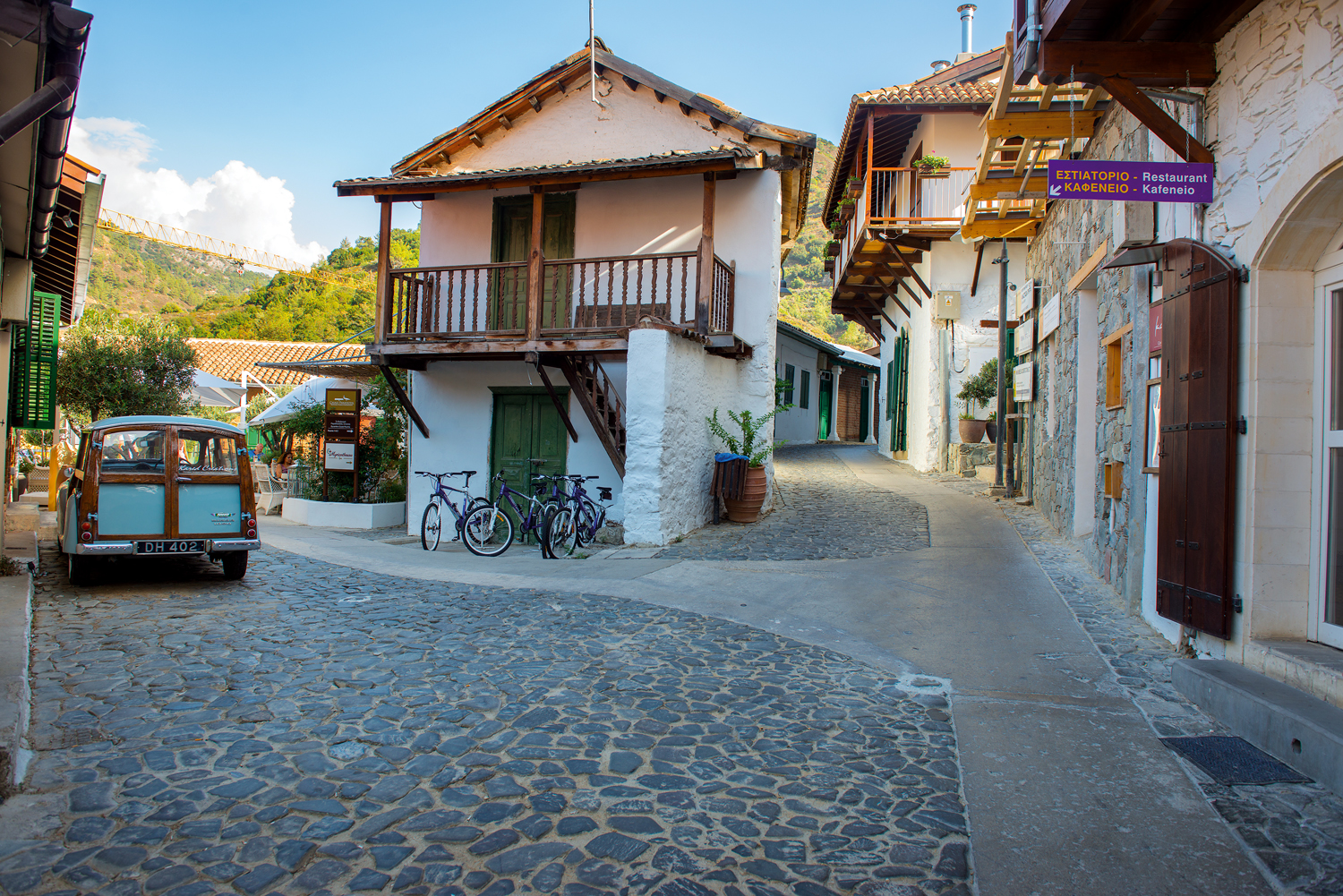Kalopanayiotis
Winner 2011 in the Tourism and
Regeneration of Physical Sites category

The picturesque village of Kalopanayiotis,
with its restored traditional houses, cobbled streets and
footpaths, its numerous chapels and churches and its healing
sulphuric thermal springs, is an example of a genuine
traditional community unaffected by modern civilization. Houses
with tiled rooftops, picturesque balconies, courtyards with
vines covering their walls and trees offering visitors their
shade, are just some of the characteristics of the village. All
these, are stunningly framed by the mesmerising flora of the
Setrachos Valley and the sound of running water provided by
Setrachos River.
Kalopanayiotis’ most important monument
which stands since the Byzantine era, is the Monastery of Agios
Ioannis Lampadistis. The Byzantine Museum next to the Monastery,
the new and old Venetian bridge, the six Byzantine era chapels,
the traditional architecture of the restored houses in the old
neighbourhood of the village and the surrounding natural beauty
of the village, provide an ideal setting for a visitor seeking a
unique and unparalleled destination.
The village of Kalopanayiotis, is one of the
14 villages of Marathasa valley area, it’s located in the midst
of the Setrachos River Valley, on the North side of Troodos
Mountain range at an altitude of 700m and at a distance of about
70km from either the city of Lefkosia (Nicosia) or Lemesos
(Limassol), the visitor can easily reach the village through a
modern and well maintained road system.

There are many churches and chapels in the
village, including the Chapel of Agia Marina which dates back to
the 10th century, the chapel of Panagia Theoskepasti built under
the shade of a 700 year old Quercus type tree and dates back to
the 12th century, the Chapel of Agios Andronikos and Agia
Athanasia built during the 11th Century and parts of its 16th
Century frescoes can still be seen, the Church of Panagia (Our
Lady) Theotokos and the Chapels of Agios Kyriakos, Archangelos
Michael, Agios Georgios and Agios Sergios and Bakhos. Most
religious sites are considered of great archeological importance
and are protected by the Department of Antiquities. Holy icons
and ecclesiastical relics from these chapels and churches dating
back to the 11th Century can be found in the Byzantine Museum of
the village.
In recent years, the local authorities with
the support of the Government and the European Union have
initiated several regeneration projects in order to revive the
village. Perceiving its rich architectural and cultural identity
and potential was a core aspect of the program, and this is
reflected in all the initiatives. For example, the Byzantine
Museum next to the Monastery of Agios Ioannis Lampadistis is
housed in the village’s old school which has been renovated and
transformed into a museum. A number of houses have been
renovated and turned into agrotourism type accommodation. For
the local community, it is also important that the village
regains its old reputation as a great therapeutic center with
healing springs. Today, the village of Kalopanayiotis is a
regenerated and rejuvenated destination, ready to welcome you.
It is a place that combines sightseeing, nature, health and
tradition, in a truly magnificent way.
More Information:
|


